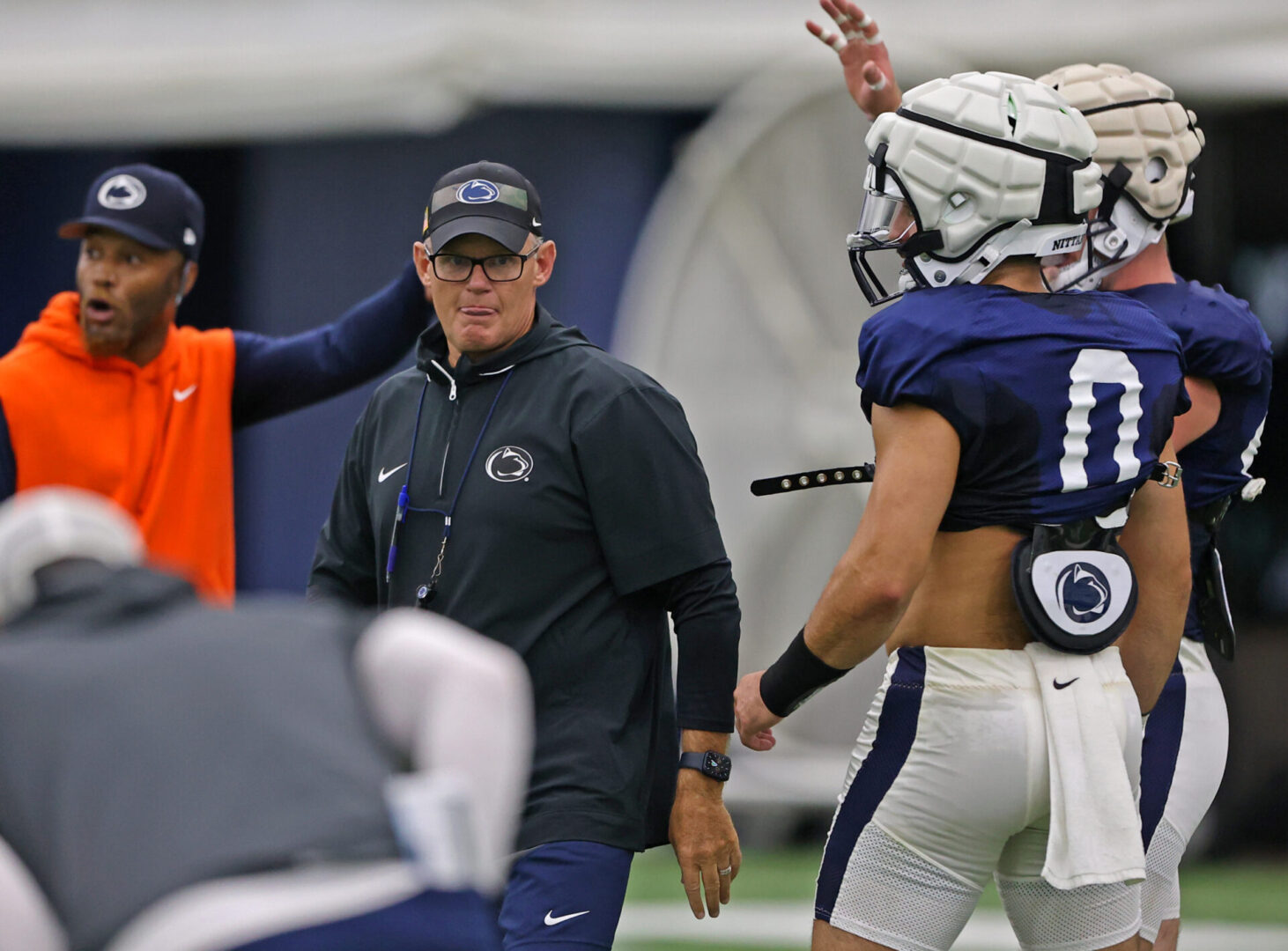Thanks to a new NCAA rule adopted in the spring and being put into practice during preseason drills, Penn State quarterback Drew Allar and linebacker Kobe King will be literally hearing their coordinators’ voices inside their head while on the playing field this year.
According to the rule, which is effective for the 2024 major college football season, “each school will have the option to use coach-to-player communications through the helmet to one player on the field. That player will be identified by having a green dot on the back midline of the player’s helmet.
“The communication from the coach to the player will be turned off with 15 seconds remaining on the play clock or when the ball is snapped, whichever comes first.”
For King, as the Mike linebacker, that means defensive coordinator Tom Allen will be in his ear in a way no college coach ever has before. (The NFL introduced the green dot in 1994.) The Nittany Lions have been practicing daily with the new technology, and King loves it — with one complaint.
The Good, according to King: “It’s fun right now, hearing a voice in your helmet. It helps me stay on point and always be attentive. I have to get the call and I have to relay it to my guys, set the front and make sure everybody gets the call before the ball is even snapped. I have to make sure everybody is right with it. It’s a big role and responsibility.”
The Bad, reveals King: The strained and often enthusiastic voice of Allen, who is in the new role of PSU DC in 2024. From King’s perspective, there’s a lot going on in his helmet when Allen telecommunicates to him from the sidelines.
“It’s just his one voice, but sometimes it sounds like more than one,” says King, laughing a bit. “I’ve been like, ‘Coach, can you back up from the mic a little bit because I can’t really hear you very well. You’re a little raspy.’”
In addition to the new helmet communications rule, there’s another big change in in-game technology. According to the NCAA, “for all three divisions, teams have the option of using tablets to view in-game video only. The video can include the broadcast feed and camera angles from the coach’s sideline and coach’s end zone.
“Teams can have up to 18 active tablets for use in the coaching booth, sideline and locker room,” the NCAA says. “Tablets cannot be connected to other devices to project larger additional images and cannot include analytics, data or data access capability or other communication access. All team personnel will be allowed to view the tablets during the game.”
MORE ON THE GREEN DOT AND…
…COORDINATED OPINIONS
Offensive coordinator Andy Kotelnicki, who will be talking with Allar via the helmet communications: “It’s been awesome. It’s good to be able to have a direct line of communication to [the quarterback] and understand the little, minute coaching points that you might make before a play. I think the challenge is, as coaches you’re not giving too much — talking too much to the quarterback. We spend a lot less time worrying about how I communicate from the press box” — Kotelnicki pointed up and then down — “to the sidelines and the field. It’s a very direct line.”
Allen: “It’s an adjustment. It’s another step in the direction of allowing us to maximize technology. The bigger game day adjustment is probably going to be the iPads on the sideline. It will depend on the offensive style and tempo, what they choose to do with the green dot. Are they huddling? Are they not? We’ll use different mechanisms to maximize things. It’s kind of a fascinating thing for me. I’ve not called a defense with the helmet communication, being a college and high school coach my whole career. It’s new for me as well.”
…THE NFL
Allen: “There’s been a lot of conversations with NFL guys I know, NFL players that I’ve coached in college that now wear it in the NFL and how they can maximize it. What they want to hear, what they don’t want to hear, how it can really help them the most.”
Kotelnicki: “The NFL has been doing it for a long time, so we spent a lot of time talking to people who’ve done it there and quarterbacks at that level and their experience.”
…BACK-UP SYSTEMS
Allen: “We’re in the process right now of having multiple ways of getting our calls into the defense. The green dot is a constant, so even when you’re playing and practicing on different fields, with different guys you’re trying to get reps with it — you’re trying to go through and maximize that process.”Kotelnicki: “Obviously, you still need to have backups, you need things of that nature if that communication breaks down.”



